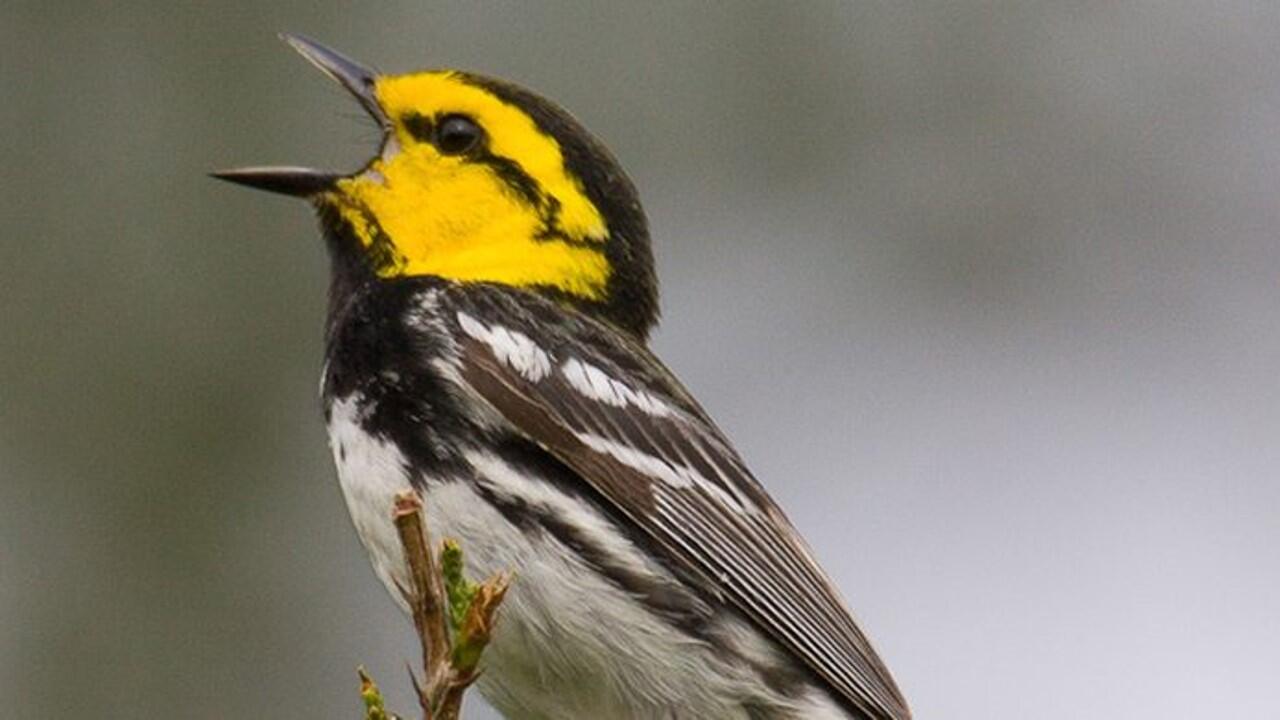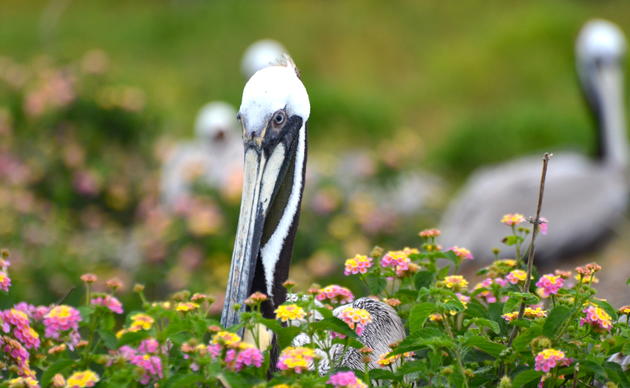Seeing or hearing the first Golden-cheeked Warblers of the season is one of the pure joys of springtime in the Texas Hill Country. Known for its striking yellow-and-black plumage and buzzy song, the species has delighted birders and nature enthusiasts since it was first identified in the United States during the Civil War era. And it shares its home with us: the only place in the world it breeds is in Central Texas.
Yet as soon as the late 1800s, biologists began voicing alarm at the rate at which the bird’s Ashe juniper habitat was disappearing. They need the oaks that host insects for their young and the strippable bark from mature Ashe juniper for building their small nests. When the first rare and endangered species lists were compiled in the U.S. during the 1960s, Golden-cheeked Warblers were already being described as rare, and they were officially listed as endangered by the U.S. Fish and Wildlife Service (USFWS) in 1990 because of the loss of their habitat.
If not before the species was listed, and certainly ever since, people have been debating how many Golden-cheeked Warblers there are. The estimates have ranged widely from fewer than 15,000 pairs to more than 250,000 males. These numbers have been estimated by various scientific means and statistical methods. No one really knows for sure, but with the loss of habitat, we can be reasonably certain that the population is declining. However, strategies such as the creation of the 33,000 acres of the Balcones Canyonlands Preserve, as well as the voluntary protection of thousands of additional acres through private conservation easements, may at least be giving the bird a fighting chance. Clearly more needs to be done to make it a fair fight.
The Texas Public Policy Foundation (TPPF) on behalf of the Texas General Land Office has been working to delist the Golden-cheeked Warbler for many years. They argue that the bird’s population has increased and that its habitat is no longer in danger of being destroyed, despite the dramatic expansion of housing and infrastructure in the Hill Country. Even if there are more birds than previously thought, relaxing protections for the species when its habitat is rapidly disappearing is not a strategy for long-term success. If fewer and fewer juniper-oak forests remain to support the birds’ efforts to raise families, then the population will continue to decline. No matter how many of the birds there are today, their long-term survival is endangered as their habitat vanishes.
Disappearing habitat is what led to the Golden-cheeked Warbler’s protections under the Endangered Species Act in the first place. And with it, efforts were put in place to guard against exactly what is happening. According to a recent study by Defenders of Wildlife, ongoing habitat loss and fragmentation remain existential threats to the recovery of the bird. Another recent study found that suitable habitat for the species declined by an alarming 29% in a mere decade, from 2000 to 2010. Without the protections of the Endangered Species Act, that number would likely have been much higher.
“Our findings demonstrate a need to strengthen current conservation measures and identify priority lands for conservation protections within Golden-cheeked Warbler habitat. This will help ensure the availability of more suitable habitat, which should aid in species recovery,” said Bryan Bird, southwest program director for Defenders.
So where do things stand?
In 2019, the U.S. Fish and Wildlife Service (USFWS) announced that it would conduct a status review of the Golden-cheeked Warbler. This review will evaluate the bird’s current population and habitat, continuing threats, as well as the effectiveness of conservation efforts. The review is expected to be completed in 2023 and is likely to go a long way toward determining whether to remove or maintain its current protections.
In addition, the TPPF once again has sued the USFWS in its ongoing effort to delist the bird based on political math rather than actual recovery.
What you can do to help
- Voice your support for expanding conservation initiatives to protect the bird, from the Balcones Canyonlands Preserve and Balcones Canyonlands National Wildlife Refuge to new land acquisition and voluntary conservation easements on private lands within warbler habitat.
- Let your elected officials know where you stand. They need to hear from you. One way to urge them to help protect habitat for the Golden-cheeked Warbler is to contact your state representative to support the Texas Farm and Ranch Lands Conservation Fund and the Texas Land and Water Conservation Fund.
- Contact the new Texas Land Commissioner, Dawn Buckingham, M.D., and ask her to consider the disappearing habitat for the Golden-cheek, and to resist the temptation to get caught up in a numbers game.
- Protect migrating birds by keeping cats indoors, making windows safer for birds and participating in Lights Out actions during migration.
How you can help, right now
Join Audubon Texas Today
Becoming a member supports our local work protecting birds and the places they need.
Consider a Legacy Gift for Texas
Planned gifts and bequests allow you to provide a lasting form of support to Audubon Texas.
Subscribe to Our Newsletter
Subscribe to our newsletter for updates about Audubon Texas's conservation work, and news about our activities and local events.





